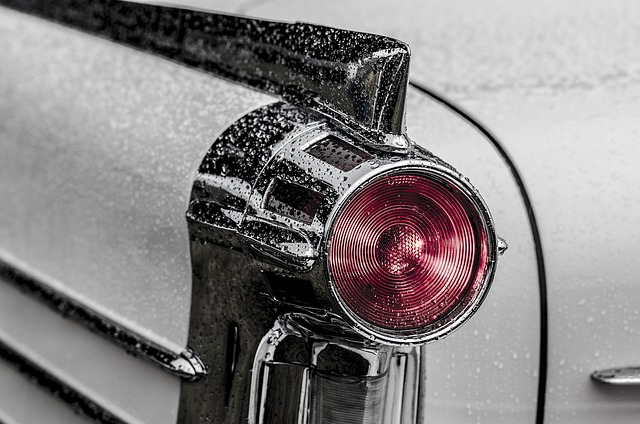PCP Claims Simplified: A Step-by-Step Guide for Filing in the UK
Managing PCP (Personal Contract Purchase) claims in the UK requires careful documentation and adher…….

Managing PCP (Personal Contract Purchase) claims in the UK requires careful documentation and adherence to deadlines. Upon reaching the end of your PCP contract, you must inform your finance provider of your intended course of action—purchasing the car, returning it, or part-exchanging it for a new one. Key to this process is handling the balloon payment if opting for ownership and ensuring you've met any mileage or duration conditions as per your agreement. The equity in your vehicle, determined by comparing the balloon payment to its current value, can be rolled over into a subsequent PCP or other finance agreement. It's essential to settle your PCP claim accurately and on time to avoid penalties and ensure a seamless transition. Keep detailed records of all payments and maintain compliance with UK regulations, including informing the DVLA of any change in vehicle ownership. For PCP claims specifically related to healthcare, ensure you have the correct prescription form with the PPCS code, along with itemized receipts or invoices and your NHS number for processing. Always refer to the latest guidelines from the NHS Business Services Authority for accurate information on PCP claim requirements and processes in the UK. After settling your PCP agreement, manage the handover process by informing the finance company of your new car acquisition and collect the car to ensure all balances are settled properly. Stay organized throughout the PCP claims process to navigate its conclusion efficiently and maintain a good relationship with your finance provider.
When navigating the financial landscape of car ownership in the UK, understanding how to file a PCP claim becomes paramount. This article serves as your definitive guide to the Personal Contract Purchase (PCP) process, detailing the necessary steps, documentation, and considerations for a successful PCP claim submission. Whether you’re looking to settle your agreement or dispute a charge, our comprehensive sections—from understanding PCP claims to managing post-submission outcomes—provide clarity and direction in the UK’s automotive financial sphere. Embark on this journey to master the PCP claims process with confidence.
- Understanding PCP Claims: A Comprehensive Guide to Personal Contract Purchase (PCP) in the UK
- Step-by-Step: Filing Your PCP Claim in the UK – What You Need to Know
- Essential Documentation for a Successful PCP Claim Submission
- Navigating the PCP Claims Process: Key Considerations and Timelines in the UK
- After Submission: Managing Your PCP Claim and Responding to Outcomes in the UK
Understanding PCP Claims: A Comprehensive Guide to Personal Contract Purchase (PCP) in the UK

Navigating PCP claims in the UK can be a straightforward process once you understand the mechanics of Personal Contract Purchase (PCP). PCP is a popular form of car finance that allows individuals to pay an initial deposit, followed by fixed monthly payments for the duration of the agreement. At the end of the contract, you have three options: return the vehicle, purchase it outright, or part-exchange it for a new model. Understanding PCP claims is crucial as it involves settling the final payment, known as the balloon payment, if you choose to own the car outright. To initiate a PCP claim, you must first notify your finance provider of your decision to end the agreement. This typically occurs when you’ve covered a predetermined percentage of the car’s value through your monthly payments. The remaining balance, the balloon payment, is then due. Should you opt for part-exchange, the equity you’ve built up in the car, which is the difference between the balloon payment and the car’s current value, can be used as a deposit towards your next vehicle. It’s important to settle PCP claims accurately and on time to avoid any additional charges and to ensure a smooth transition to car ownership or your next contract. To manage PCP claims effectively, keep records of all payments made and review the terms of your agreement regularly. This will help you prepare for the final payment and understand your options at the end of your PCP contract.
Step-by-Step: Filing Your PCP Claim in the UK – What You Need to Know

When filing a PCP (Personal Contract Purchase) claim in the UK, it’s crucial to follow a structured approach to ensure a smooth process. Begin by gathering all necessary documentation related to your PCP agreement, including the finance agreement, proof of mileage, and service history records. These documents will substantiate your claim and demonstrate compliance with the terms of the contract. Next, contact your PCP provider to obtain a settlement figure for your car. This step is pivotal as it sets the stage for the remainder of the claim process.
Once you have the settlement figure, you can proceed to sell your car either privately or through a dealership. The funds from the sale should be set aside to cover the final balloon payment and any additional costs such as settlement fees or early termination fees, if applicable. After settling the outstanding balance with your finance company, you’ll receive an official settlement letter, which is a key document for your PCP claims UK process. Keep this letter safe, as it will be required to complete the PCP claim. Finally, ensure that you inform the DVLA about the change of ownership and update your vehicle tax accordingly. By meticulously following these steps, you can successfully navigate the PCP claims process in the UK and avoid any potential pitfalls. Remember to adhere to all deadlines and guidelines provided by your PCP provider to facilitate a timely claim settlement.
Essential Documentation for a Successful PCP Claim Submission

When filing a PCP (Professional Cost Per Item) claim in the UK, it’s crucial to have all the necessary documentation to ensure your claim is processed smoothly and efficiently. The key documents required for a successful PCP claim submission typically include a prescription form with the appropriate PPCS (Practice Costing System) code, which indicates the type of service being claimed for. Additionally, you must provide itemized receipts or invoices that clearly show the cost of each item or service provided by the healthcare professional. These documents should be detailed and legible to avoid any discrepancies or delays in reimbursement. It’s also important to include proof of the patient’s NHS number, as this is essential for processing claims. Furthermore, if the claim relates to a service provided under an exception reporting scheme, additional forms or documentation may be necessary. Always refer to the latest guidelines provided by the NHS Business Services Authority for the most accurate and up-to-date requirements for PCP claims UK.
To avoid any issues with your claim, ensure that all the information on the claim form is complete and correct. This includes patient details, practitioner details, and the services or items for which you are claiming. The supporting documents must match the details on the claim form to prevent any complications. Additionally, keep a copy of both the claim form and the supporting documentation for your records. This will help you track the progress of your claim and resolve any issues that may arise during the processing stage. Remember to submit all paperwork within the required time frame to avoid delays in reimbursement, as late submissions can lead to processing backlogs and potential loss of income.
Navigating the PCP Claims Process: Key Considerations and Timelines in the UK

When filing a PCP (Personal Contract Purchase) claim in the UK, understanding the process and adhering to key timelines is crucial for a successful outcome. The PCP claims process begins at the end of your agreement term when you have made all the mandatory payments as outlined in your original contract. To initiate the claim, you’ll need to submit several documents, including proof of ownership, evidence of mileage, and the final payment settlement figure. It’s imperative to liaise with your finance provider for a settlement figure, which will be used to calculate your optional final payment and any potential guaranteed future value (GFV) shortfall or excess.
Upon completing these steps, the vehicle can then be handed back to the finance company. If you opt to purchase the car at the end of the contract, you’ll settle the optional final payment and any outstanding GFV if there is a shortfall. Conversely, if you decide to hand the car back, you only pay the optional final payment. It’s important to note the timelines involved; typically, you have until midnight on the last day of your agreement to inform the finance provider of your decision and return the vehicle. Delays beyond this deadline may result in additional charges or affect your rights under the agreement. Ensure you familiarize yourself with the specific terms of your PCP contract, as these can vary between lenders. By understanding the PCP claims process and adhering to the necessary timelines, you can navigate this financial obligation with confidence and clarity.
After Submission: Managing Your PCP Claim and Responding to Outcomes in the UK

After submitting your PCP (Personal Contract Purchase) claim in the UK, effective management is key to navigating the process that follows. It’s advisable to keep a detailed record of all communications and documentation related to your PCP claim. This includes the original finance agreement, proof of ownership transfer, and any correspondence with the finance company. Such records will support your claim and provide clarity should there be any disputes or questions regarding your case. Once submitted, monitor the progress of your claim closely. Most finance companies offer an online portal where you can track the status of your PCP claim, making it easier to stay informed about its progress.
Upon settling your PCP agreement through lump sum payment or final installment, the next step is to handle the handover process with the finance company. This typically involves providing them with details of your new car and arranging for the vehicle to be collected. After collection, the finance company will settle any outstanding balance on your behalf. It’s important to ensure that all agreements are fulfilled promptly to avoid any additional charges. Once the PCP claim is settled, you’ll receive a settlement figure for the car’s estimated value, which you can use as a deposit towards your next vehicle purchase. Responding to the outcome of your PCP claim requires your attention and prompt action to ensure a smooth transition, whether you are returning the car, settling it, or opting to purchase it outright. Always adhere to the stipulated timelines to maintain a good relationship with the finance company and avoid any potential issues.
When navigating the process of filing a PCP claim in the UK, it is crucial to be well-informed and prepared. This guide has provided a thorough understanding of what PCP claims are, the necessary documentation for submission, and the key considerations and timelines involved. By following the step-by-step instructions outlined, you can confidently proceed with your PCP claim, ensuring you adhere to the UK’s specific requirements. Remember to keep all relevant paperwork organized and submit them accurately to avoid delays. Post-submission, staying proactive in managing your claim and understanding potential outcomes is essential for a successful resolution. With these steps in hand, you are now equipped to handle your PCP claim effectively, ensuring a smoother experience in the UK’s financial landscape.







